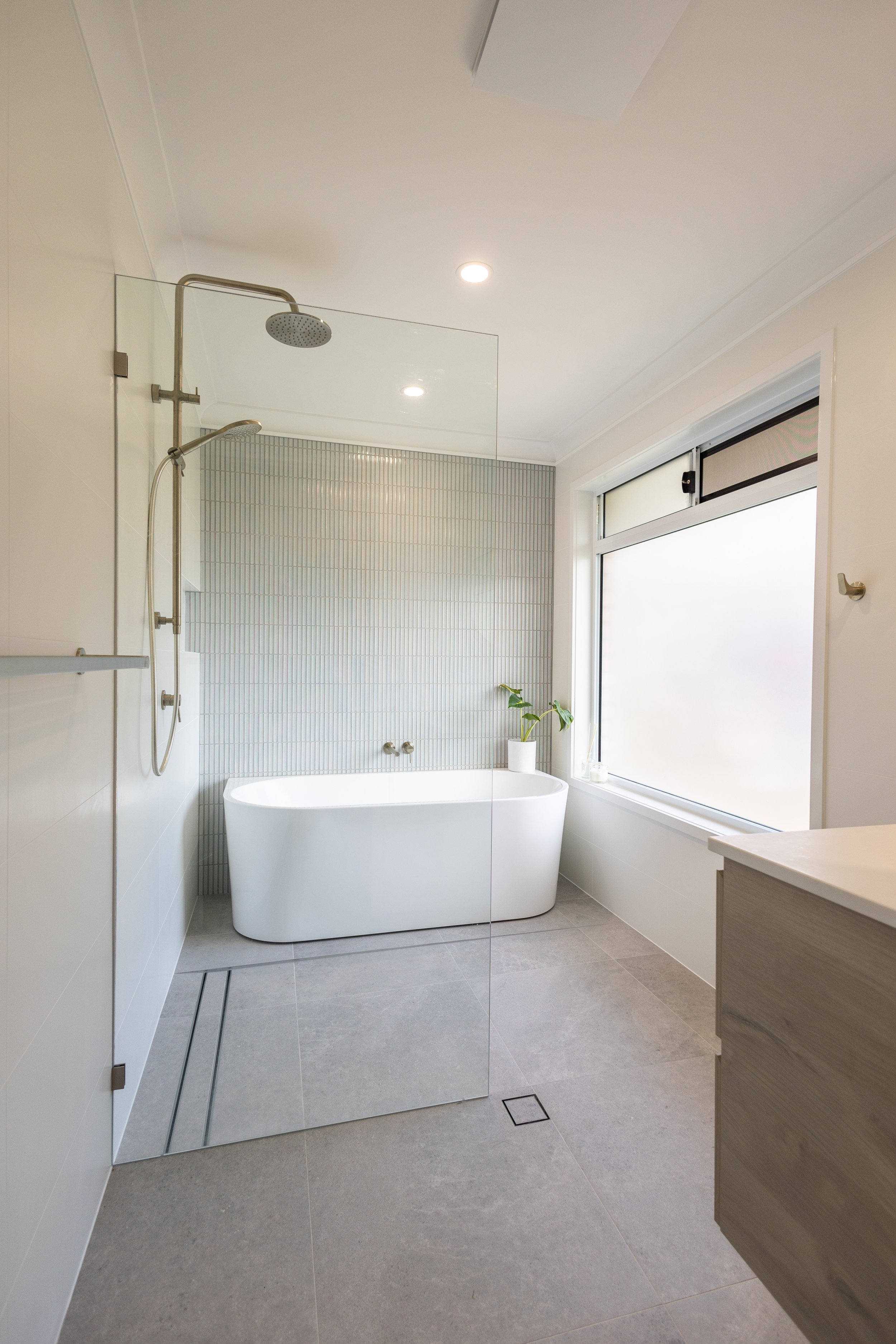Creating a Cohesive Home: Consistency in Bathroom Design
Imagine having a sleek, modern bathroom straight out of a home design magazine. But as you step out into the next bathroom, kitchen or laundry it all feels like a different story—styles clashing and colors conflicting each-other. It's like wearing mismatched socks! Overlooking how your bathroom fits with the rest of your home can make your home renovations look cheap and messy. In this blog, we'll discuss why it's crucial to consider your entire home's style when planning your bathroom. You homes overall design has the potential to impact your property's overall value and the overall look and feel of your home. A thoughtfully designed bathroom that aligns with your home's aesthetics enhances the property's appeal and creates a seamless, pleasing transition as you move through the different spaces in your house. It's about creating a home that feels unified and harmonious, adding both beauty and value to your living space. 🏡✨
Ensuite Renovation we completed for our clients (Vision Bathrooms)
Understanding the Grand Design
Before diving into the nuances of bathroom design—colors, textures, fittings—take a moment to grasp the broader vision for your home. What's the end goal of your home renovations? Your vision should act as a guide for you, ensuring that the designs you choose resonate cohesively with one another. The last thing you'd want is for your bathroom to feel as though it doesn't belong, clashing with other areas in your home.
Consider the color theme and textures of your bathroom in relation to the rest of your home—kitchen, laundry, and other spaces. The aim is not to replicate every element, but to ensure the overall look and feel is consistent across various spaces in your home.
Key Questions to Ask
Future Renovations:
“Do I plan to renovate my kitchen, laundry, or other bathrooms in the future?”
If yes, it's essential to keep these future spaces in mind to ensure your chosen bathroom design will complement and flow seamlessly with them.
Recent Renovations:
“How can I incorporate design elements from my recent renovation into my new bathroom?”
Incorporate materials used in your kitchen, laundry or other bathrooms completed, aiming for a consistent but not identical look.
Use the design elements from the recent renovations as a starting point for your bathroom design.
Remember, it's not about everything matching perfectly. The faucets in your kitchen don't need to precisely mirror those in your bathroom. The goal is to have some design elements carry through, creating a sense of connection from one space to another. It's about maintaining a consistent look and feel throughout your home.
Example from Experience
Drawing from our experience, we've seen numerous instances where clients have renovated multiple rooms, creating a consistent yet varied theme across their home. Let's briefly explore a quick example to illustrate this concept further.
Main Bathroom
Tiles: Floor Tiles: Grey (Same tile pattern, different colour) Wall Tiles: White matte wall tiles (same/different) Feature Wall Tiles: Soft light blue kit kat tiles (different)
Tap ware finishes: Brushed Nickle (Same)
Vanity: Different vanity style Same wood finish
Ensuite
Tiles: Floor Tiles: Grey (Same tile pattern, different colour) Wall Tiles: White matte wall tiles (same/different) Feature Wall Tiles: Soft light blue kit kat tiles (different)
Tap ware finishes: Brushed Nickle (Same)
Vanity: Different vanity style Same wood finish
This clients renovation goals and priorities were the “Dream Bathroom” category and their priorities were 1. Quality, 2. Design, meaning they were willing to allow more room in their budget for higher costs in order to achieve their goals. We renovated their main bathroom and master ensuite, at a first look, the design is cohesive and consistent across the two, but if you look closer, there are some points of difference.
They used the the same floor tile style, but in two different shades for each bathroom.
The ensuite floor file is a slightly lighter creamy tone stone look tile, while the main bathroom floor tile is the same tile, but in a more grey shade.
They chose to use more white matt white wall tiles in the main bathroom rather than using the floor tile up the walls like they did in the ensuite.
They also used a different mosaic feature tile in both rooms, with the main bathroom being a light blue finger tile mosaic, and the ensuite being a matt white finger tile mosaic.
The vanities were also slightly different, but they were both from the same supplier product range meaning they could use the exact same wood finish to ensure look appeared consistent with one another.
The tap fittings were kept the exact same through both bathrooms.
These clients did want the rooms to be slightly different to add more variety and character throughout their home, but you can see the differences remain consistent, aren’t overly obvious and complement each other quite well.
In conclusion, the secret to a stunning bathroom design lies in a well-thought-out integration with the broader design theme of your home. Consistency is key, and while not everything needs to match perfectly, a cohesive design enhances the overall aesthetic and value of your home. So, as you embark on your bathroom renovation journey, remember to see and consider the bigger picture.


